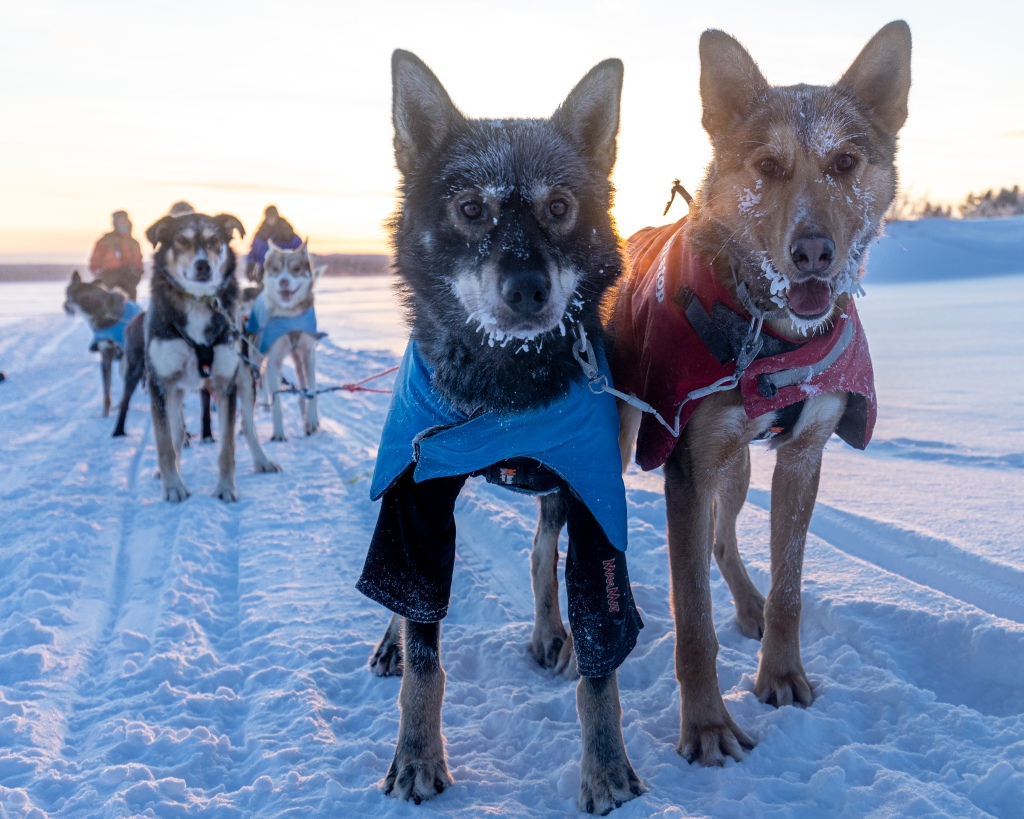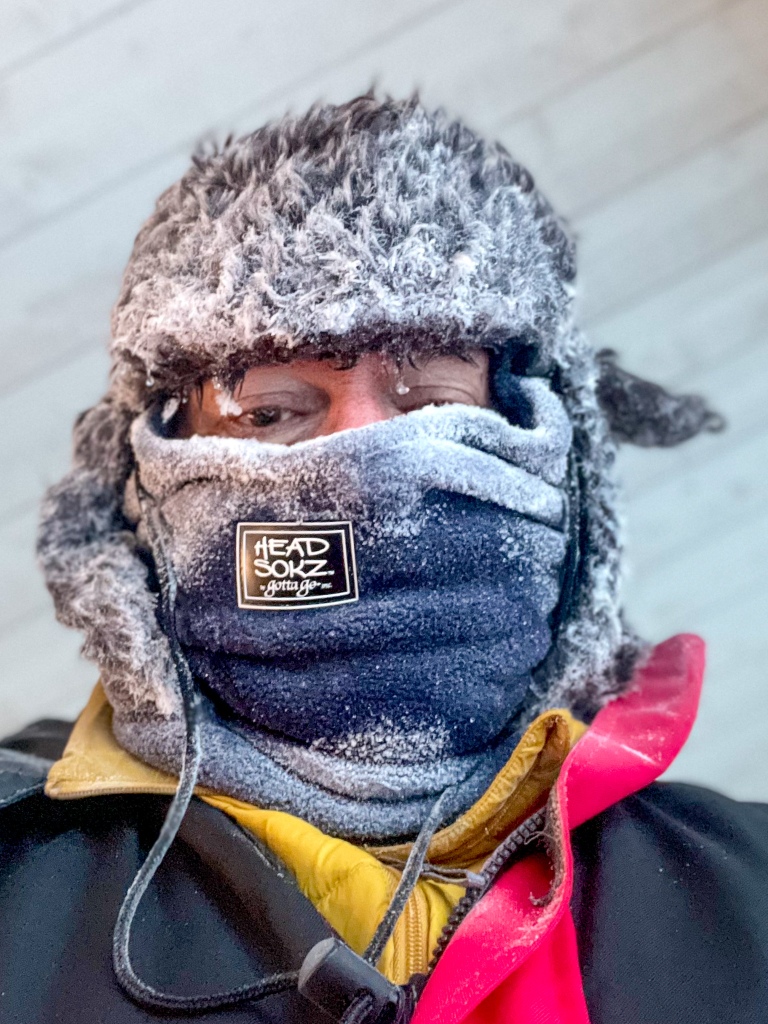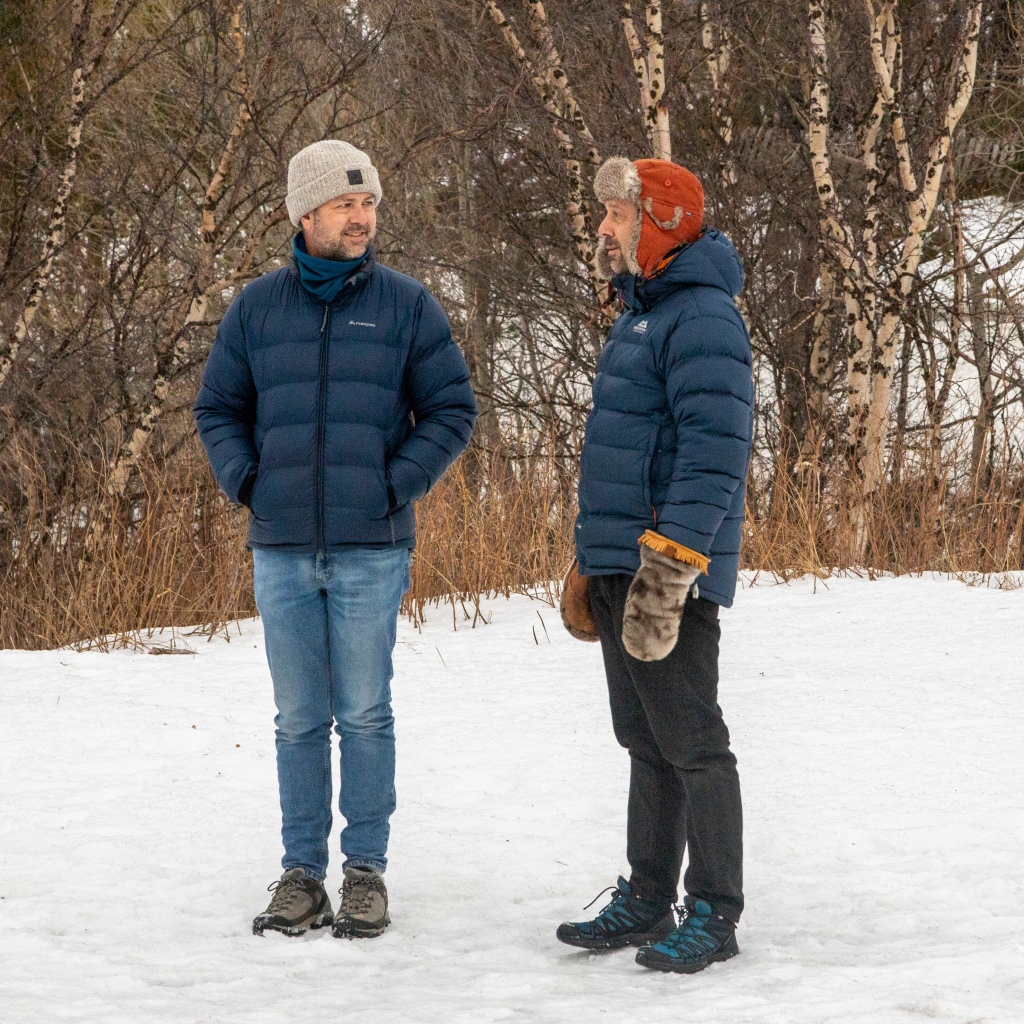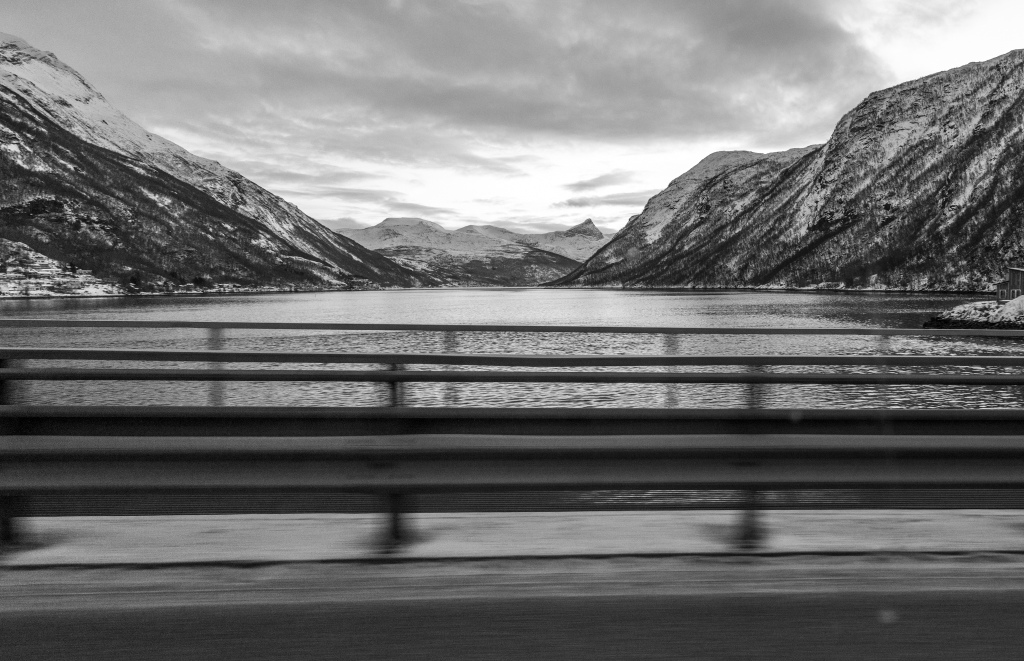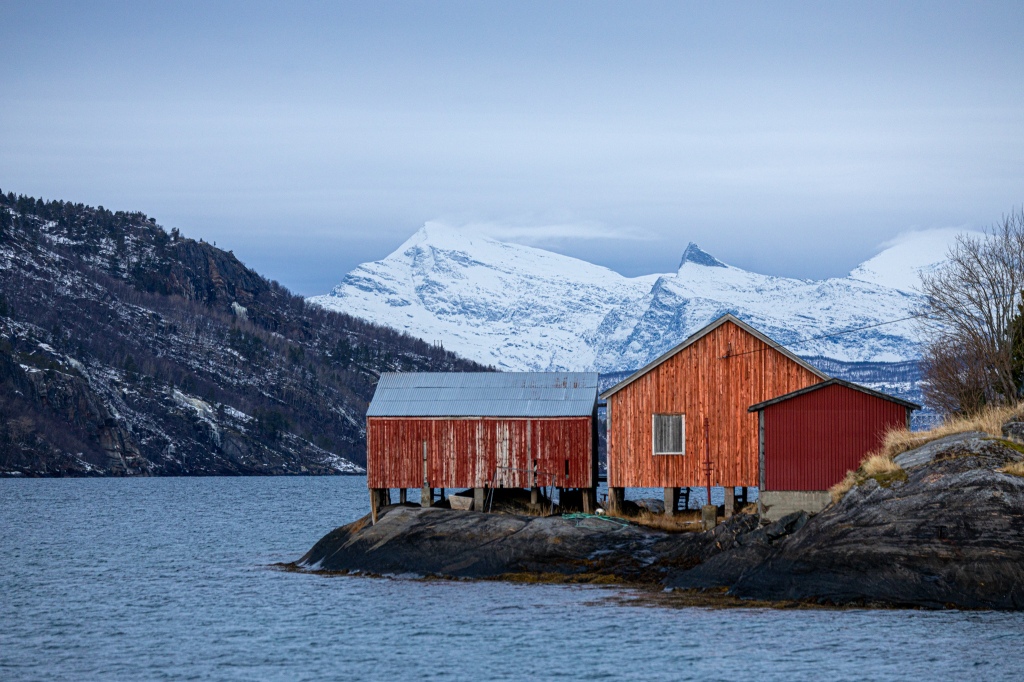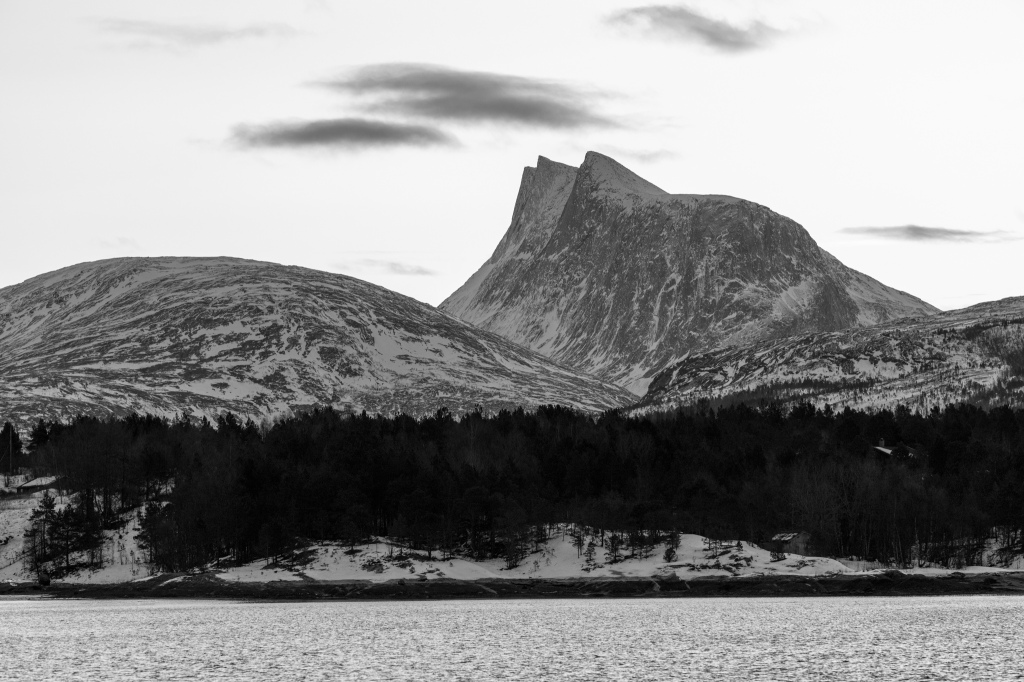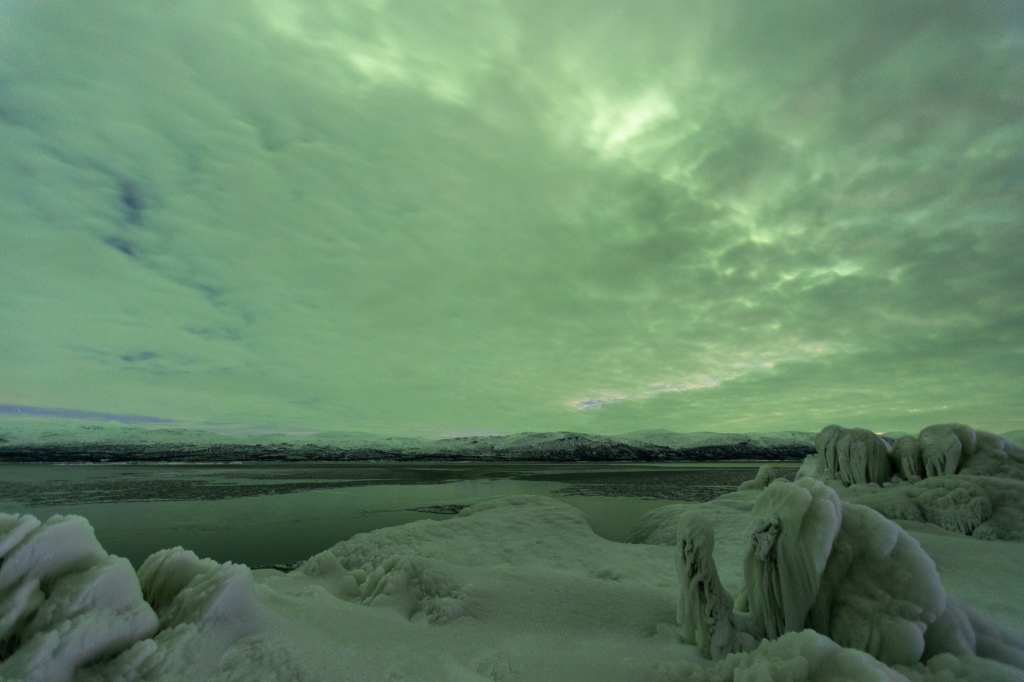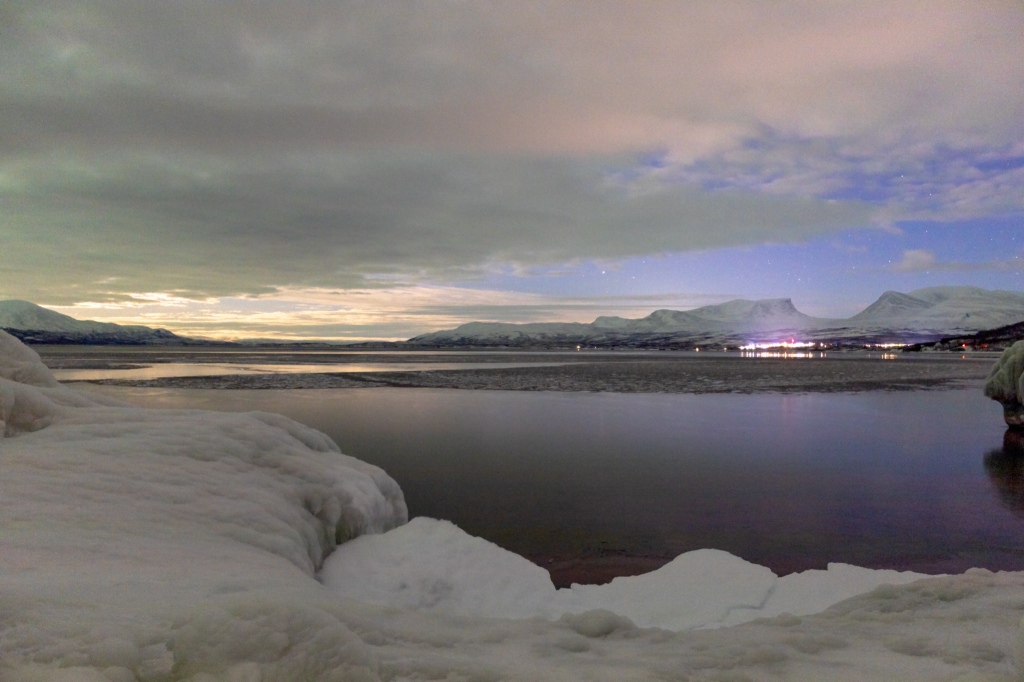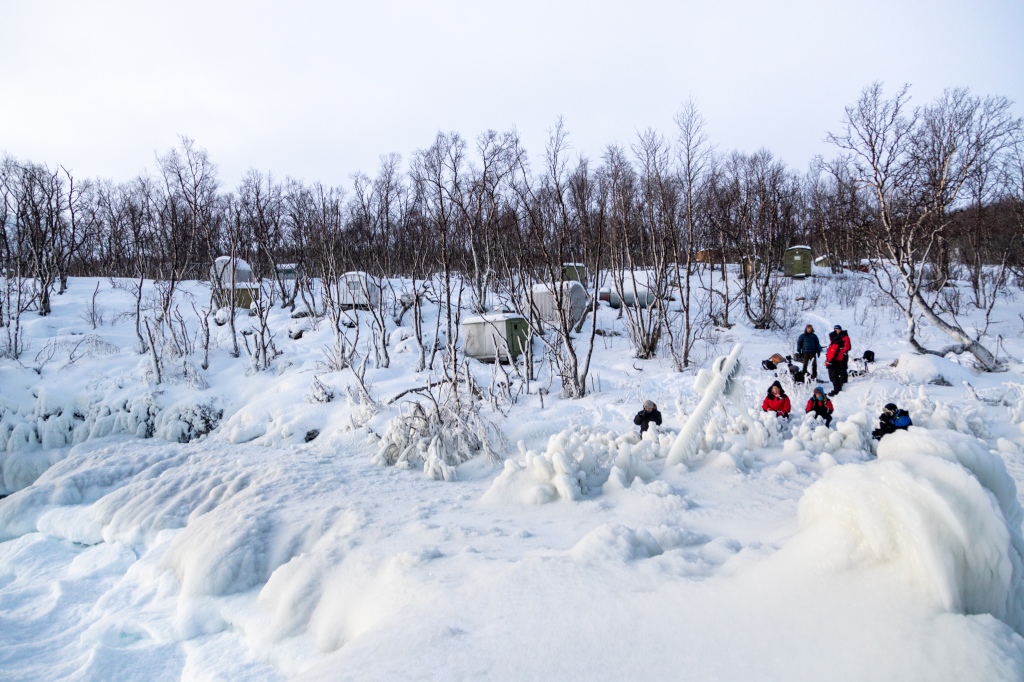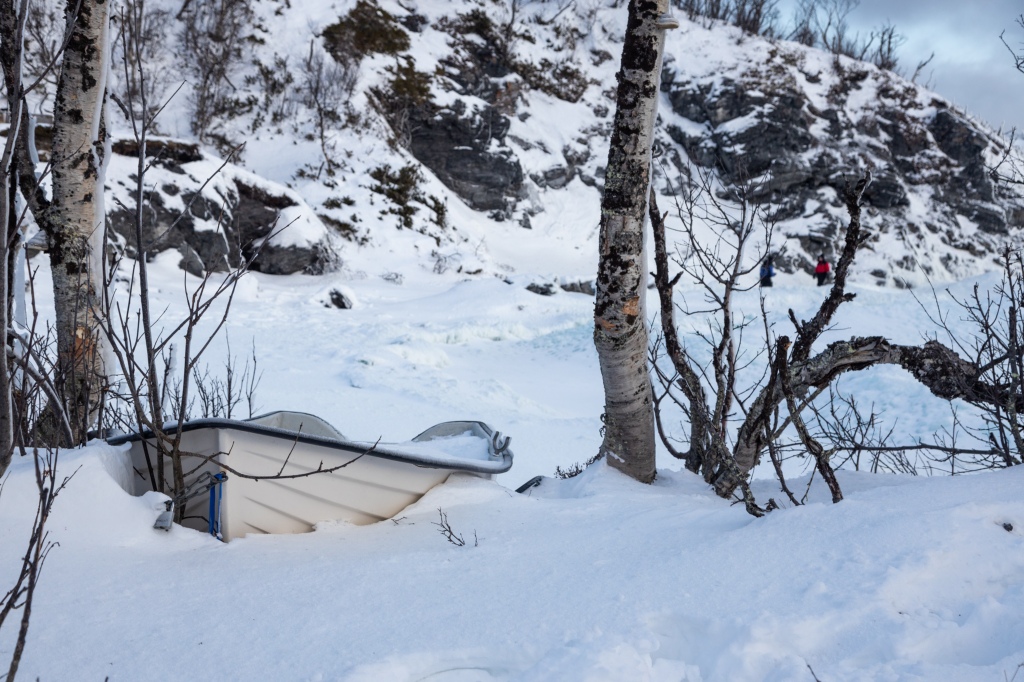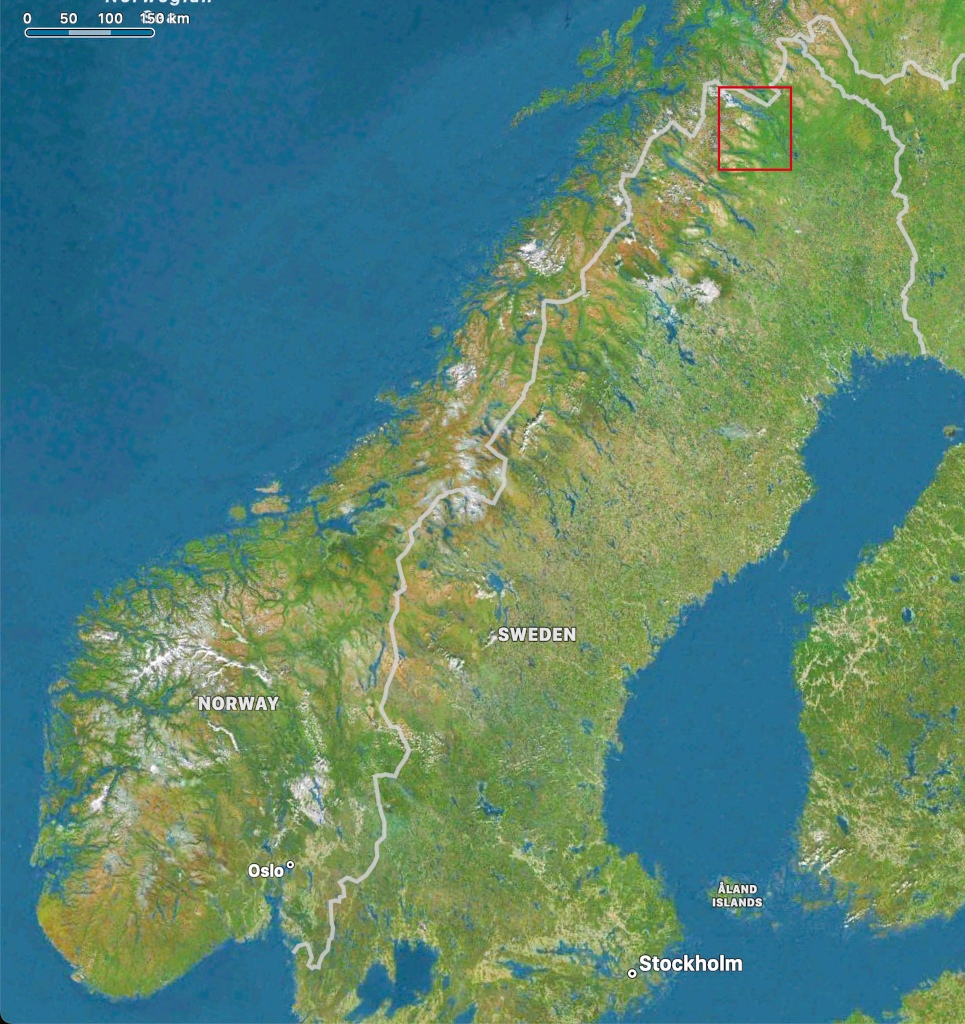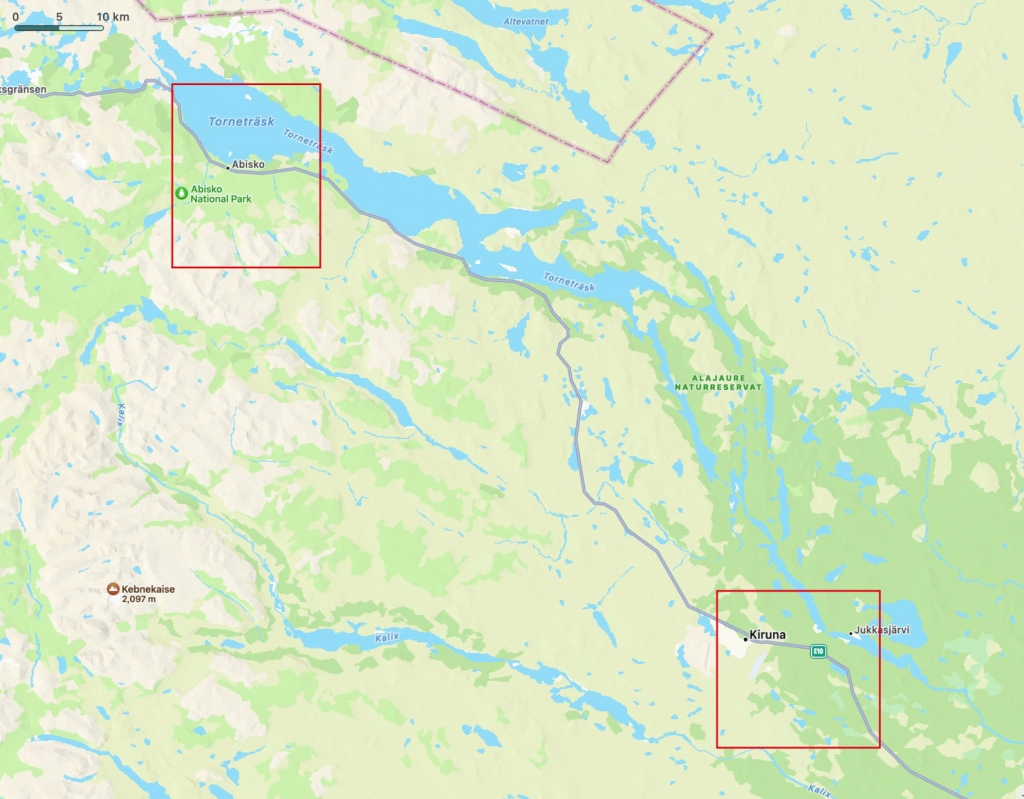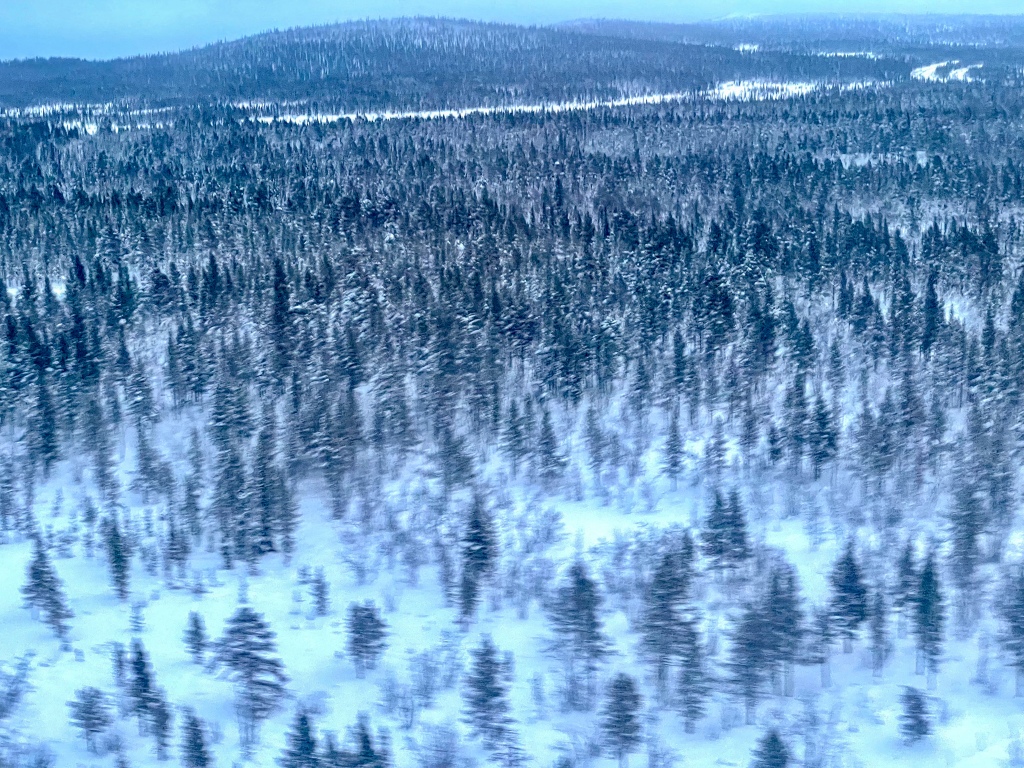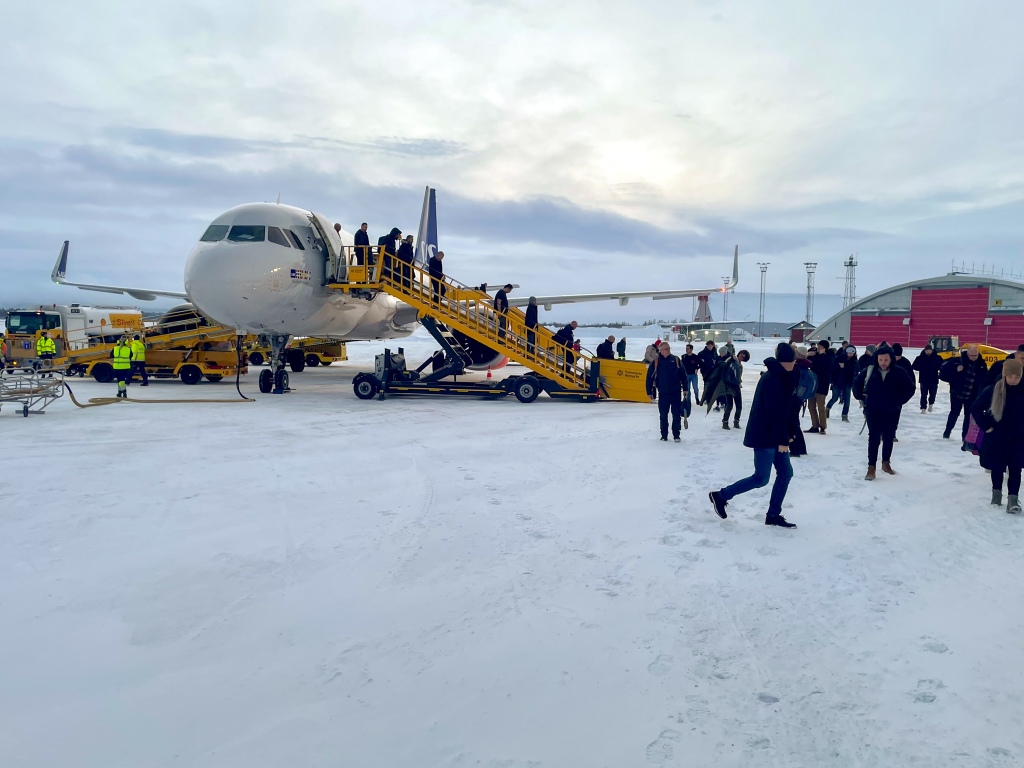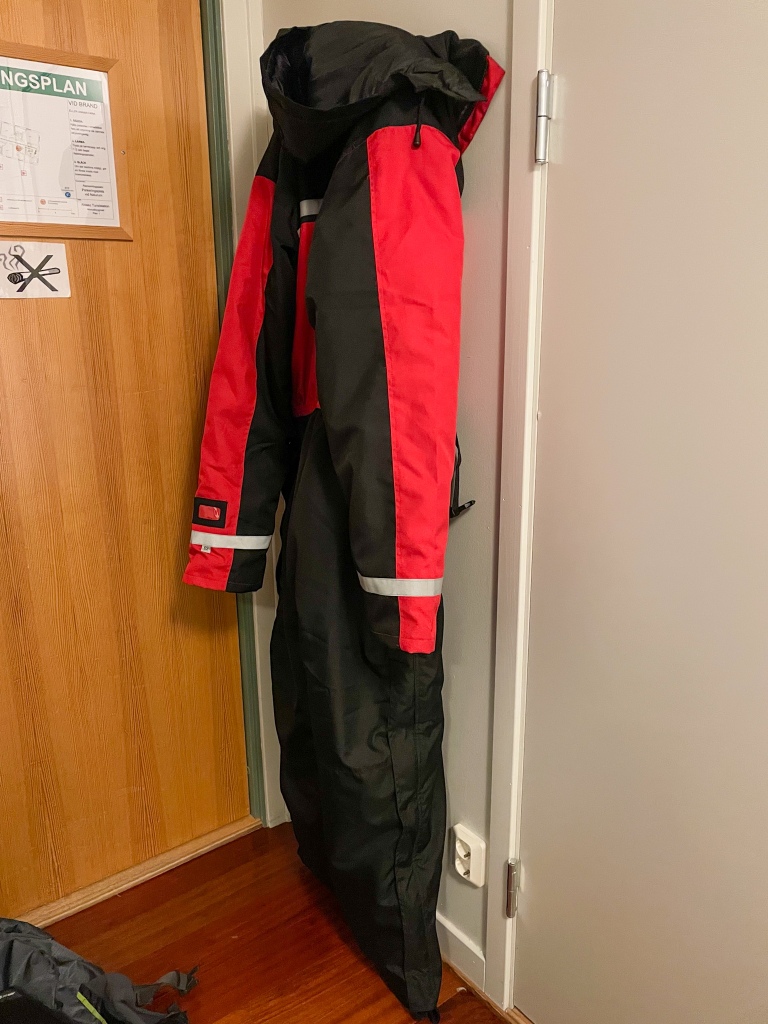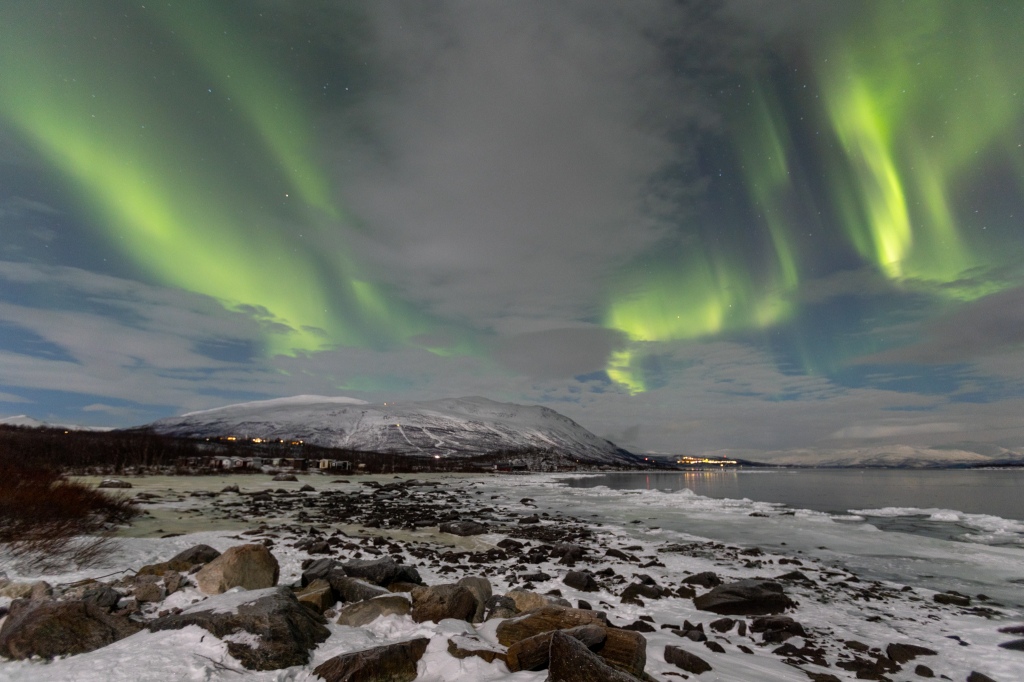Pack, move, unpack. Off to the Aurora Camp near Kiruna. Nothing much happening today, just trying to fit everything into the suitcase, plus the massive size 1,000 boots, and the oversize overalls (x10) into the cars that are already bulging with people, bags, photography equipment. Thankfully, Peter had a trailer with his snowmobile and we managed to take it all… I think.
So, nothing happening today… Hmmm
We drove to the Original Ice Hotel for lunch. So that was about an hour and a half, or maybe a little more and had a very nice, fairly quaint affair from the salad and meat selection. After this, on a whim, we decided we would take a few photographs of the ICE HOTEL!!
The Ice Hotel. Described on its website:
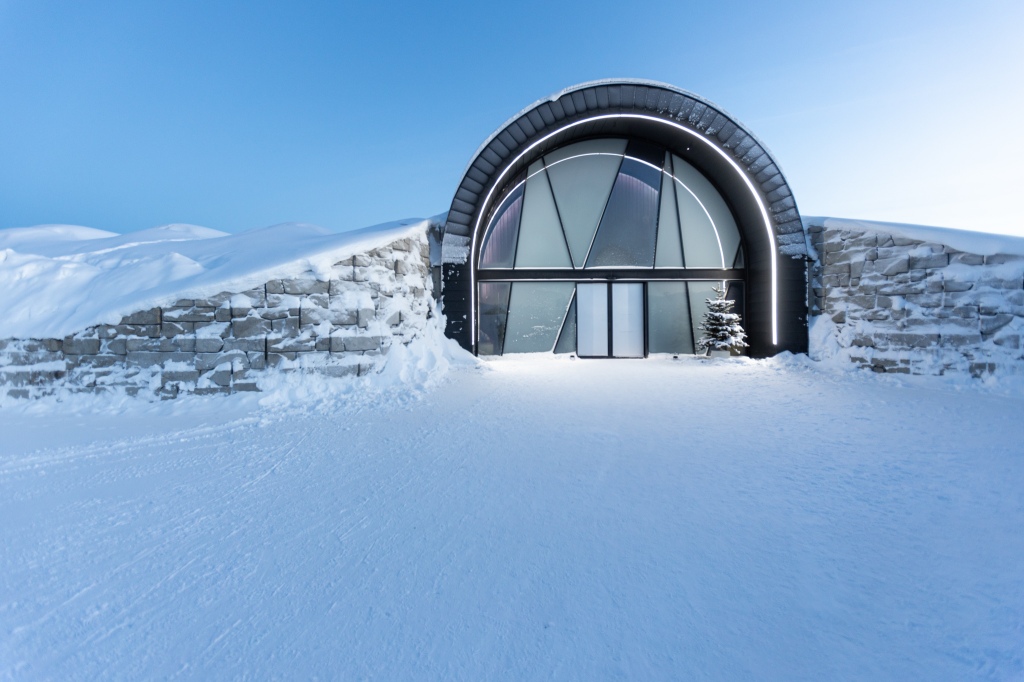
a hotel and art exhibition made of ice from the river Torne, each year reincarnated in a brand new design. A place to discover silence, northern lights, glistening snow clad forests, reindeer, cloudberries, kettle coffee and much more.
The Ice Hotel, was the first of it’s kind in 1989 (with similar ventures now on the Map). Each year they manufacture several wings of the hotel cut from Ice from the river Torne, running (or not running as the season dictates). Artists across the (snow) globe submit an imaginative idea to create a room. The themes cannot be reused year after year. The selected artists are sent to Kiruna where they are given a month’s training, from which they make their room. The prize for such an opportunity is to 1) make the room, and 2) sleep in it on the first night.

At the end of the season, the rooms and the entire wing of the hotel melt into the Torne from where it began.
Of course, photographing this wasn’t actually a whim, but rather a planned visit. Each morning all guests vacate, and the rooms are opened for visitors.
There is an area known as Icehotel365 which is open all year round and includes the Icebar, with all of the glasses made from ice (flaming zambuka anyone?). With no more waiting, here are the photo’s.
Oh, note being a Hotel, of course safety is of the utmost importance and there are fire extinguishers placed all over.
If you look through these images, try and see some of the amazing detail that is carved either into the room, or the sculptures. And yes, it’s all Ice. The only things in these rooms are electrics, ice and bed linen.
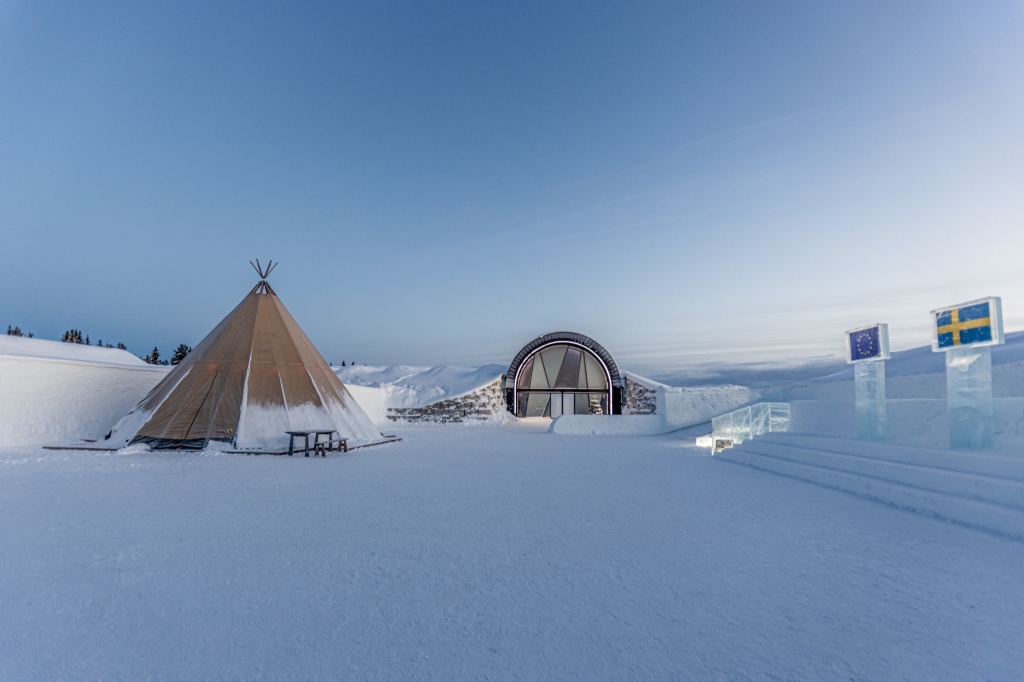
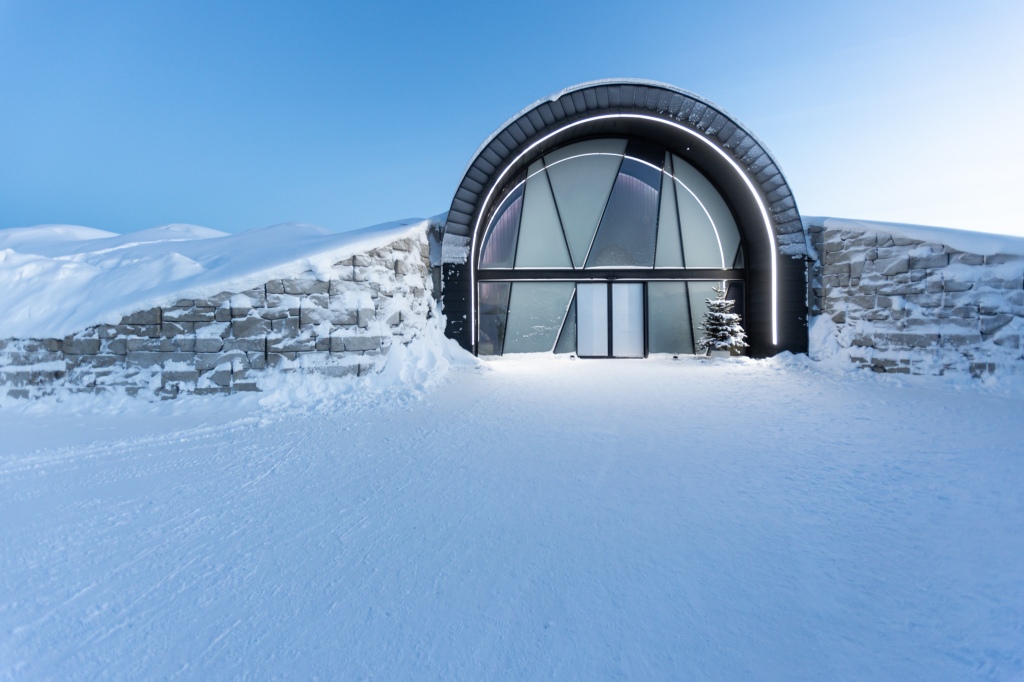






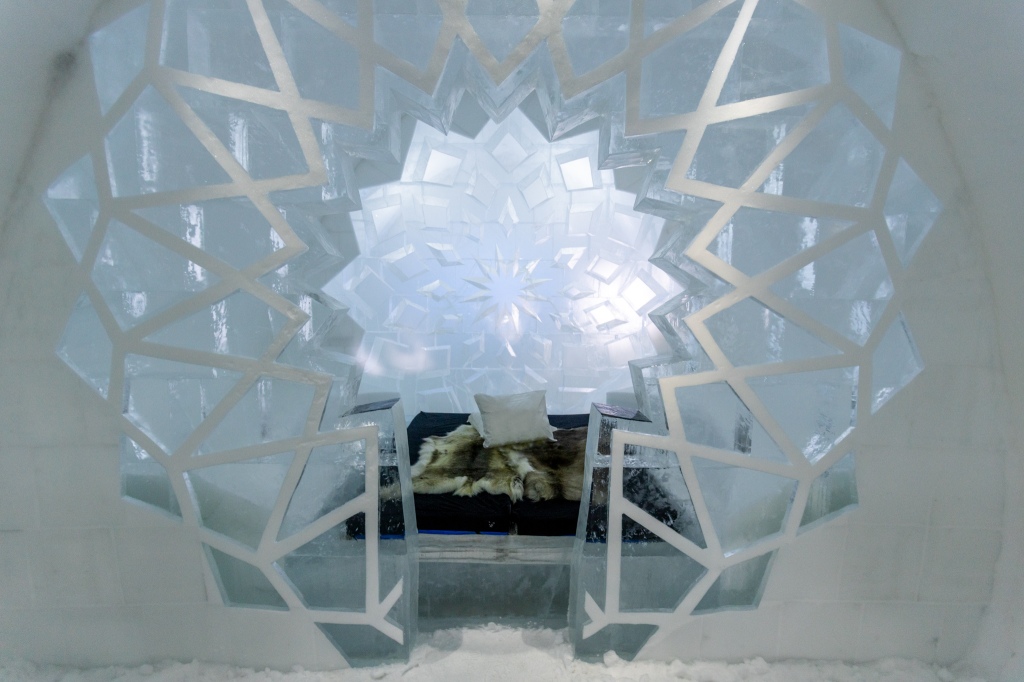
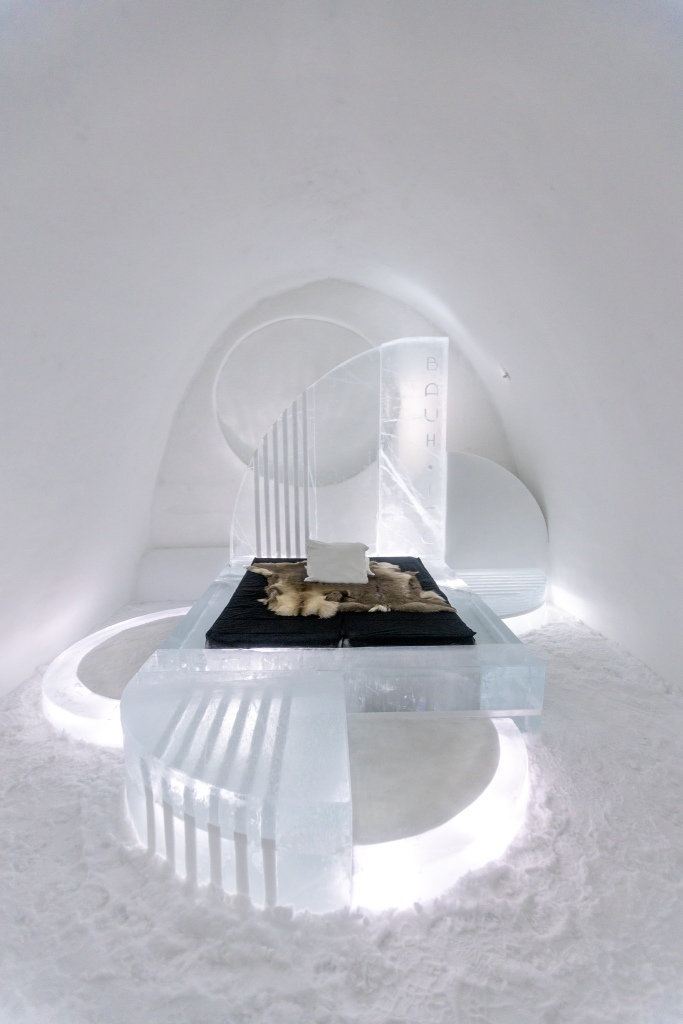
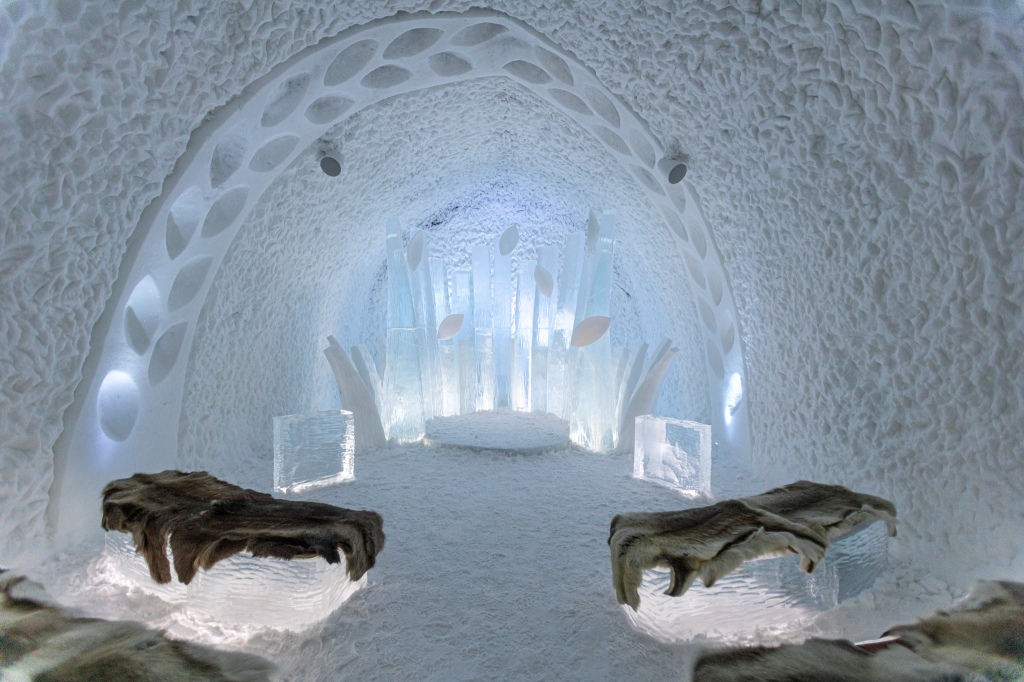


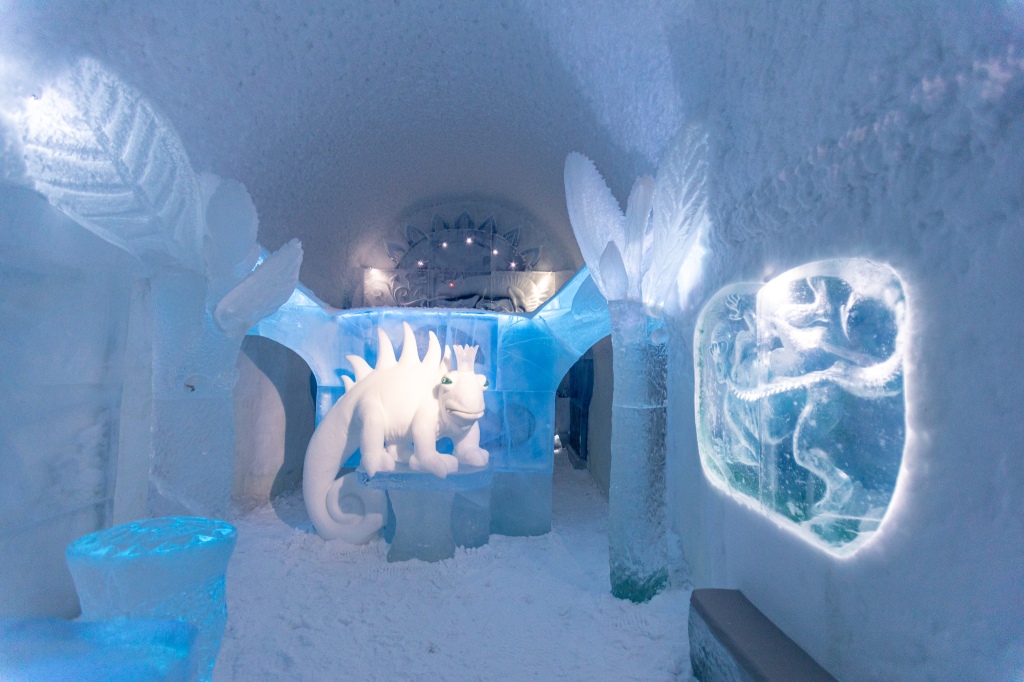
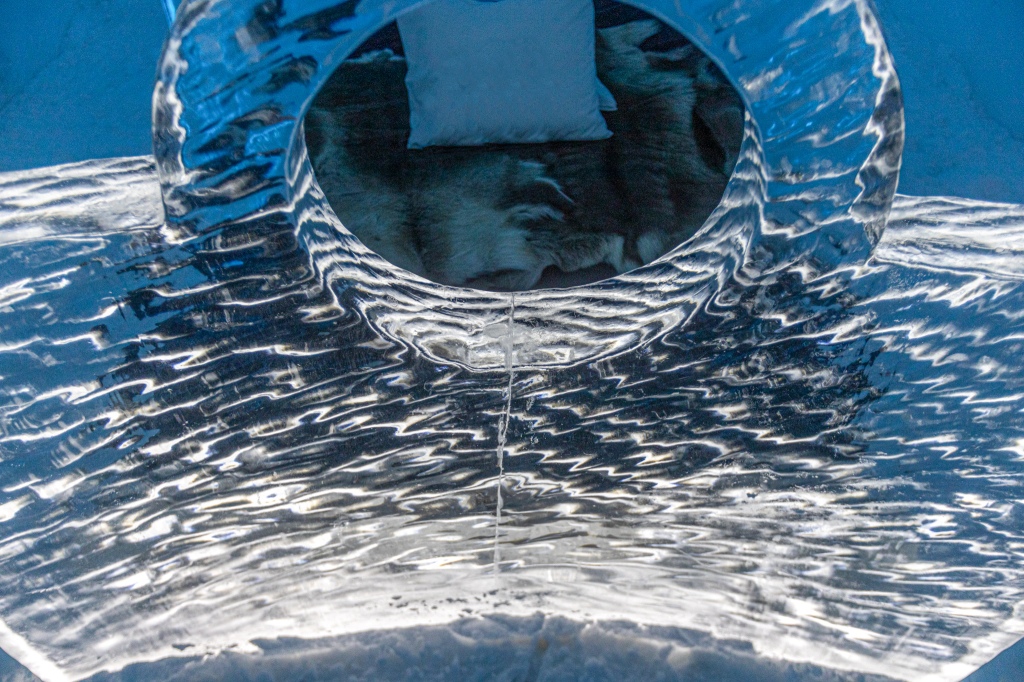


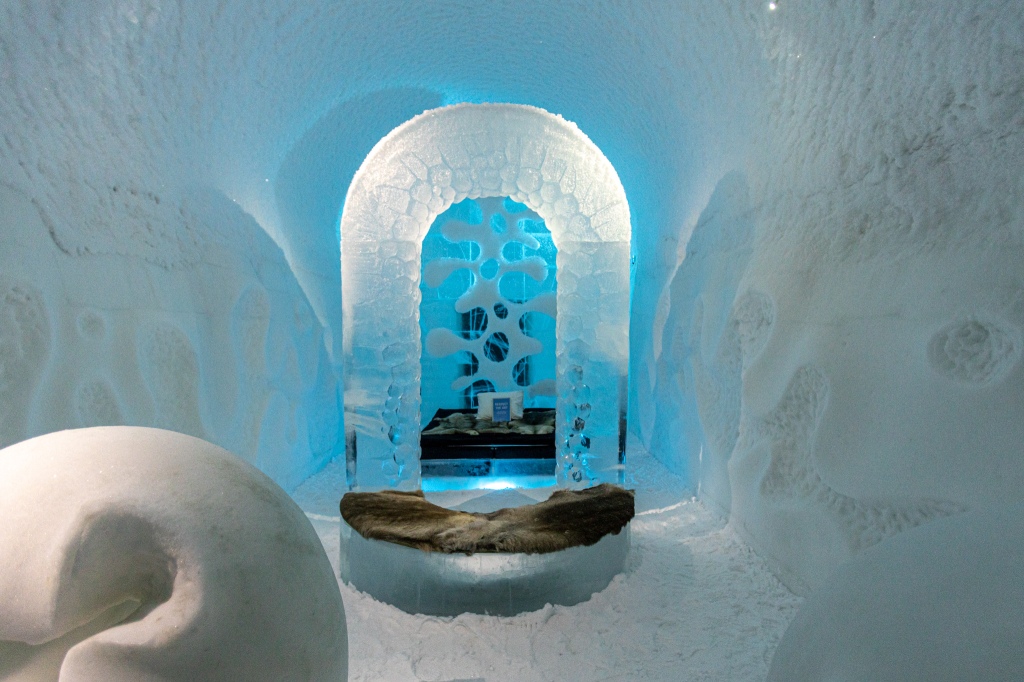
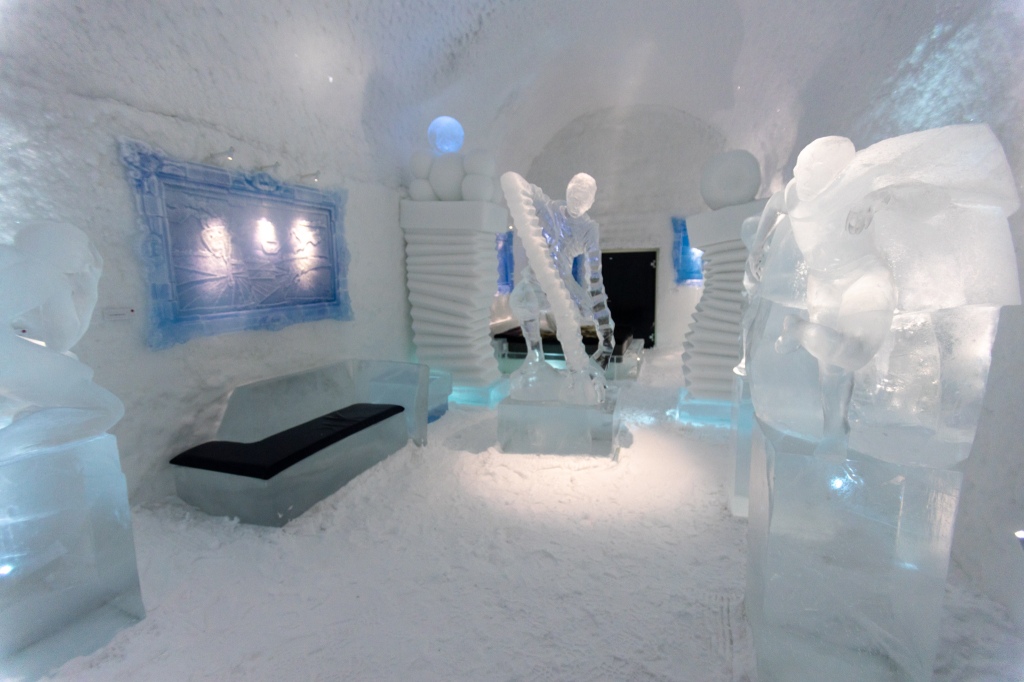

So that was the Ice Hotel. Expensive night’s accomodation, great for those with bad backs (although the beds are quite comfortable) but worth the experience just to visit if nothing else.
I’ll keep this second part brief. Look, I’ll even dot point it for you.
- Settled in at the Aurora Camp (more on the campsite later)
- Dinner
- Get all our snow stuff on, coz we’re out for a cold night!
- Drive to an area somewhere near the place we go Dog Sledding on our last night. It’s right near a bridge.
- Photograph the Aurora near the bridge and running river.
It was a good Aurora, with a lot of movement, from one side of the sky to the other. It’s certainly the best we had seen and we kept shooting for what seemed like hours, and probably was. Who watches the time? But it was fun. Setting up our cameras for landscapes, sweeping river, trees in different formations, and even some astro photography. What wasn’t to love?
If fact I even took a photo of a part of the auroro going right through Orions Belt also known as the Three Kings / Three Sisters.

So check out these few images. You see I also tried my hand of zooming a long expsoure of the Aurora. Something of course, than I had never done before. Did it work? Does it look alright?
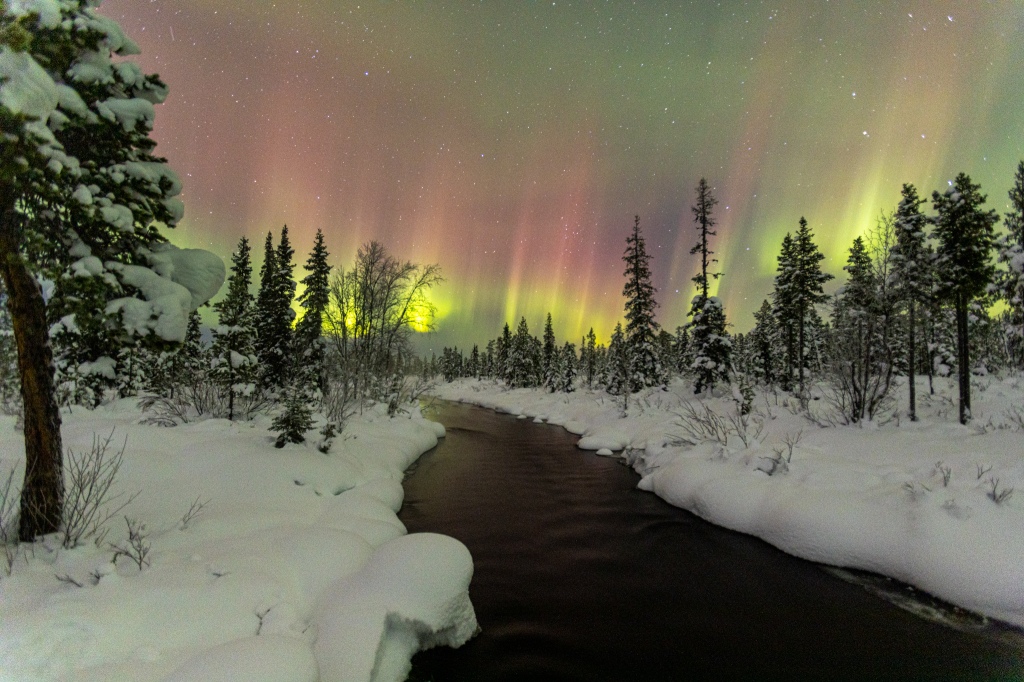
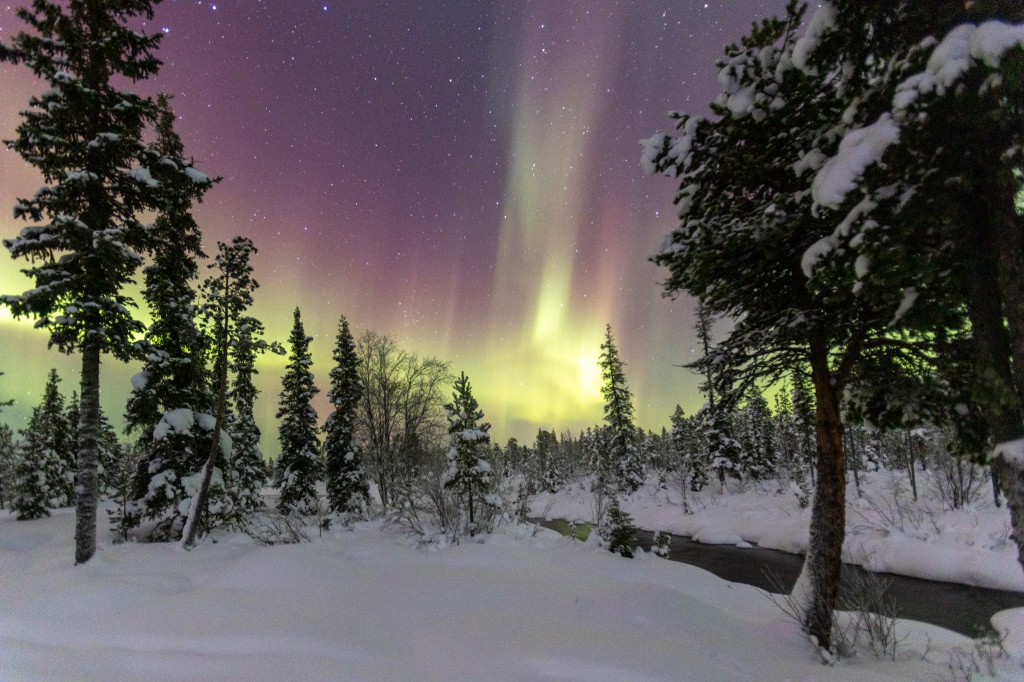


Peter really is a nice guy to have around. Hot Chocolate anyone? So whilst the Aurora had certainly performed it’s duties this evening, it slowly left us and we were left with empty cups, smiles on our faces and a rewarding trip.
Pack up, walk the 0.7 kilometres (we were told it was 100 metres) to the car and head back to camp. I was in the car with Rob, Christine and Chauffeur David. Dark roads back, he was checking the mirror and looking up into the sky. “The Aurora is still going and it’s quite active”. Moments later… “We should stop and check this out”.
We pulled over into a side road, to get off the main stretch and “What the hell”. The aurora went crazy! I had seen an a full on Aurora in Iceland with Jane and friends in 2018, but this was something special, even beyond that. It was bright green, it was full of waves, and as I like to explain it, like a woman waving her dress. This Aurora was exciting. Wow!

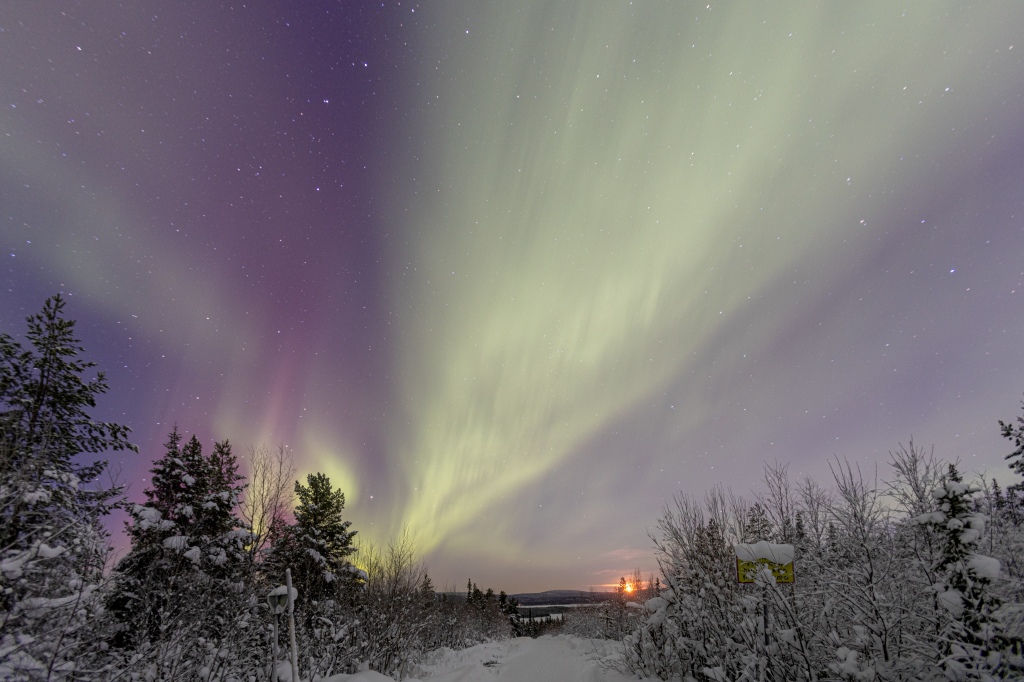


And with that done, we returned to camp, pretended when the others returned that we had missed it. Apparently, this was a KP6 Aurora. Quite high.
Off to bed around 12:30 I think.
That was an eventful day.






